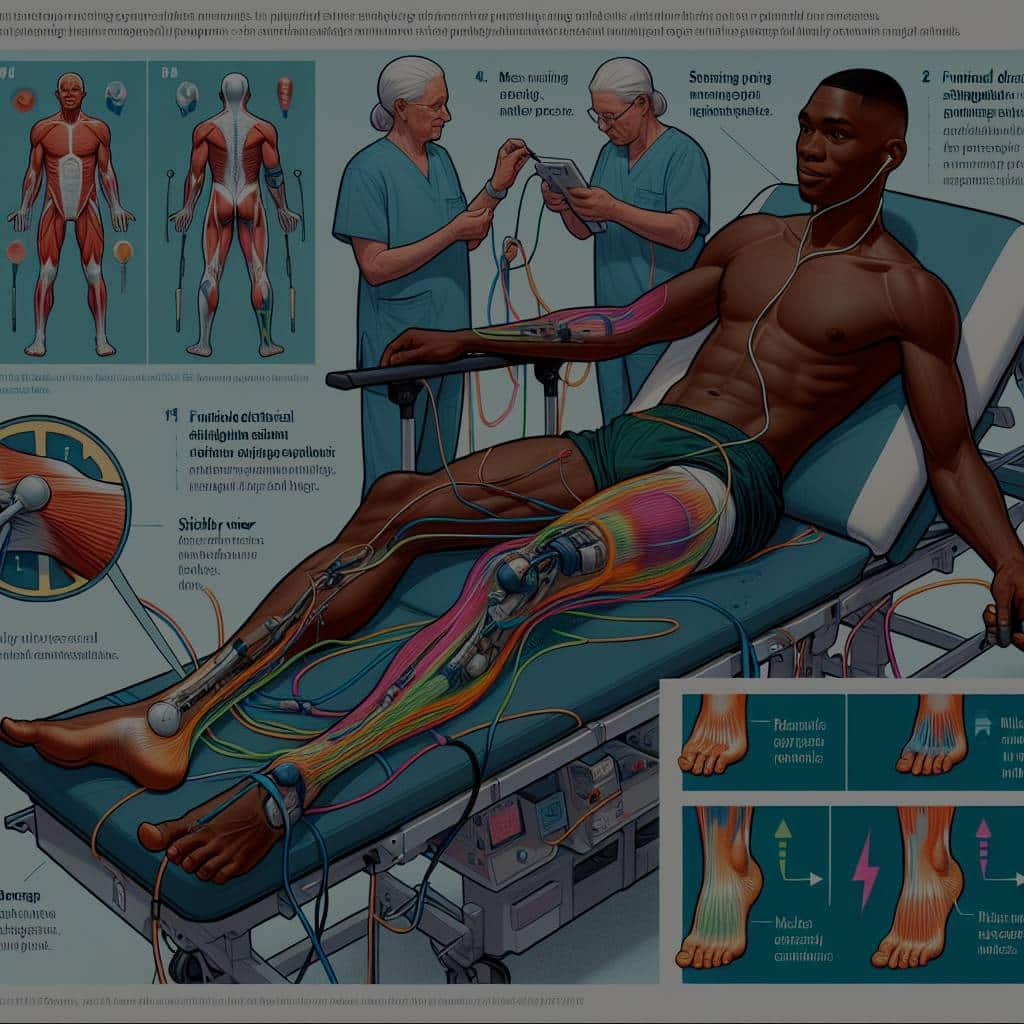How Does Functional Electrical Stimulation Aid Recovery in Paralyzed Athletes?

Functional Electrical Stimulation (FES), a revolutionary technique used in the field of rehabilitation, has been making waves in transforming the lives of paralyzed athletes. This article delves into the science behind FES, and how it is being harnessed in the rehabilitation of patients suffering from spinal cord injuries. We will explore various studies conducted on this subject as documented on Google Scholar, PubMed, Crossref, and Sci, shedding light on this remarkable scientific breakthrough.
The Science behind Functional Electrical Stimulation
Before we delve into the specifics of FES, it’s essential to understand the science behind this emerging technique. FES involves the use of small electrical currents to stimulate the paralyzed muscles, promoting movement and function that the injury had halted.
A découvrir également : How Can a Focus on Mental Health Change the Culture of Professional Boxing?
The human body operates on electrical signals. In healthy individuals, these electrical impulses originate from the brain, travel through the spinal cord, and reach the muscles, causing them to contract and relax. However, in individuals with spinal cord injuries, this pathway is disrupted.
FES acts as a bypass for these disrupted pathways. The electrical stimulations are applied directly to the affected muscles, causing them to contract. This contraction leads to movement, which is the primary goal of FES therapy. The use of FES isn’t just limited to aiding movement; studies have shown that it also helps improve muscle strength, endurance, and reduces muscle spasticity.
Avez-vous vu cela : How Can Eye-Tracking Technology Improve Free-Throw Accuracy in Basketball?
Research Studies on FES and its Application in Rehabilitation
Numerous studies have been conducted on the application of FES in rehabilitation. A quick search on Google Scholar, PubMed or Crossref will reveal a wealth of information on the subject. Universities and health institutions worldwide have contributed significantly to the body of research.
For instance, a study published in the Journal of Spinal Cord Medicine used FES in the rehabilitation of patients with spinal cord injuries. The patients showed marked improvements in muscle function and mobility. They also reported an increase in their quality of life, underlining the physical and psychological benefits of FES.
Another study on PMC highlighted that FES could also be used to restore respiratory function in patients with spinal cord injuries. The electrical stimulation was used to activate the diaphragm, a key muscle in the breathing process. This restoration of function has numerous health benefits, including improved cardiovascular function and reduced susceptibility to respiratory infections.
FES in Paralyzed Athletes: A Game Changer
The application of FES extends beyond just medical rehabilitation. It has been a game changer in the field of sports, particularly for paralyzed athletes. By stimulating the paralyzed muscles, these athletes can regain some degree of function and potentially return to the sport they love.
Several sports organizations have embraced the use of FES in training and competition. For example, FES cycling events are now a regular feature in the Paralympic Games. In these events, paralyzed athletes use cycles fitted with electrical stimulators that activate their leg muscles, enabling them to pedal.
Of course, the application of FES in sports rehabilitation doesn’t come without challenges. There are limitations to the degree of function that can be restored, and the electrical stimulation can cause discomfort in some athletes. However, with continuous research and innovations, these challenges are gradually being overcome.
The Role of Universities in Advancing FES Research
Universities have played a crucial role in advancing FES research. Through rigorous study and innovation, they have opened up new possibilities in the application of FES in rehabilitation.
For example, researchers at the University of California, Los Angeles (UCLA) have developed an advanced FES system that can be controlled using a smartphone app. This breakthrough has made FES more accessible and convenient, allowing patients to receive therapy in the comfort of their homes.
Besides advancing research, universities also play a crucial role in training the next generation of health professionals in the use of FES. Through their physiotherapy and rehabilitation programs, universities equip students with the skills and knowledge to use FES effectively in their practice.
The Future of FES in Rehabilitation
The future of FES in rehabilitation looks promising. With each passing year, new advancements and innovations are being made, improving the effectiveness of FES and its application in various fields.
One area showing immense potential is the use of FES in combination with other therapies. For instance, combining FES with robotic exoskeletons has shown promising results in improving gait and mobility in patients with spinal cord injuries.
Similarly, advancements in technology are making FES more user-friendly and accessible. Innovations such as wearable FES devices and smartphone-controlled systems are making it easier for patients to incorporate FES into their daily lives.
While the journey of FES is still unfolding, one thing is certain: it’s a powerful tool in the arsenal of rehabilitation, offering renewed hope to patients with spinal cord injuries, including paralyzed athletes.
Expanding the Reach of FES Through Technology
Technological advancements are playing a significant role in extending the reach and efficacy of Functional Electrical Stimulation (FES). The advent of wearable FES devices and smartphone-controlled systems, for example, have made it easier for patients to benefit from this revolutionary therapy even in the comfort of their homes.
A significant breakthrough has been the development of an advanced FES system by researchers at the University of California, Los Angeles (UCLA). This system, which can be controlled using a smartphone app, has made FES therapy more convenient and accessible. These innovations highlight the potential of technology in transforming FES therapy, making it more effective and patient-friendly.
The use of wearable FES devices is another advancement that has had a profound impact. These devices, which can be worn on the body like a piece of clothing, deliver electrical stimulation to the paralyzed muscles, promoting movement and function. Wearable FES devices offer a portable solution for patients, allowing them to incorporate FES therapy into their daily routines easily.
In addition to advancements in FES delivery systems, research is also being conducted in areas such as brain-computer interfaces. These futuristic technologies have the potential to revolutionize the way FES is administered, opening up new possibilities for patients with spinal cord injuries.
Conclusion: The Bright Future of FES in Rehabilitation
Functional Electrical Stimulation (FES) has emerged as a beacon of hope in the field of rehabilitation, particularly for patients with spinal cord injuries, including paralyzed athletes. The application of this revolutionary technique, as documented in numerous studies on Google Scholar, PubMed, Crossref, and PMC, has shown promising results in improving muscle function, mobility, and overall quality of life.
The future of FES in rehabilitation indeed looks bright. With continuous research and the integration of technology, the efficacy of FES is likely to improve significantly, enhancing the quality of life of many more individuals with spinal cord injuries.
While there are challenges and limitations to be overcome, the journey of FES so far has been a testament to the power of innovation in health sciences. The ongoing research in universities and health institutions worldwide is paving the way for more advancements and breakthroughs in this field.
In conclusion, FES stands as a powerful tool in the arsenal of rehabilitation, offering renewed hope to many. With its wide range of applications, from medical rehabilitation to sports for paralyzed athletes, FES is truly transforming lives, one electrical pulse at a time.
